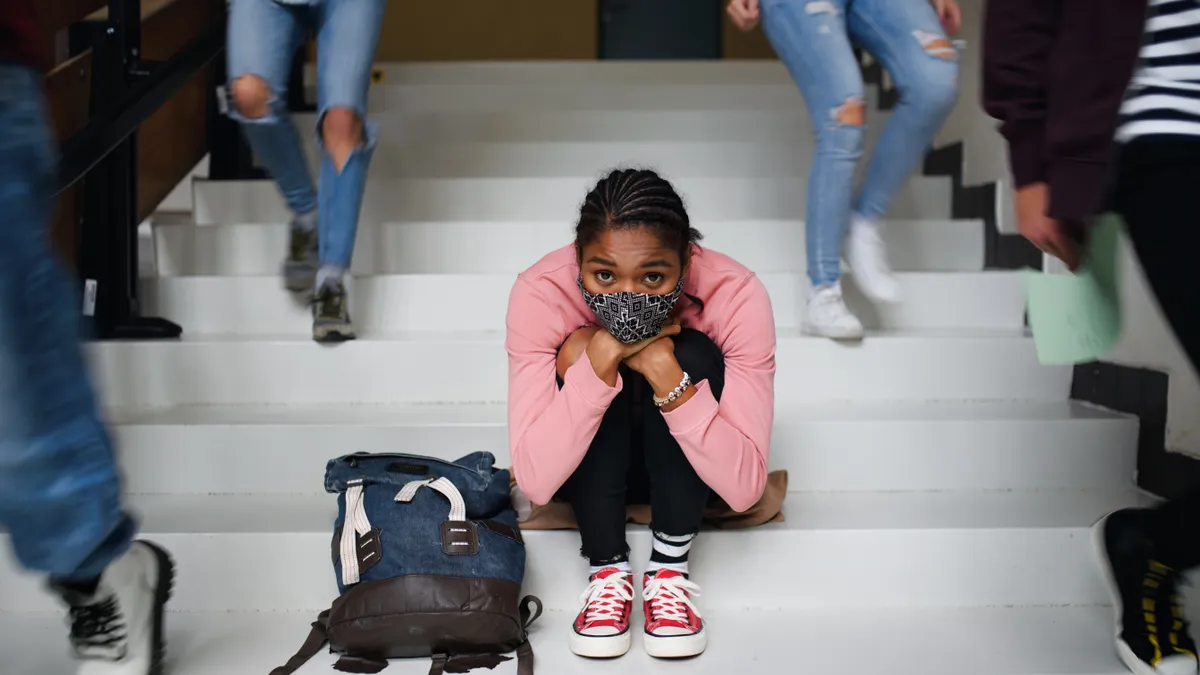Dive Brief:
- While the percentage of middle and high school students saying their mental health is an obstacle to learning jumped from 39% to 48% between spring 2020 and the 2022-23 school year, fewer students also said they feel they have an adult to turn to at school when they’re feeling stressed or having problems than they did prior to COVID-19, according to a survey by the nonprofit YouthTruth.
- Before the pandemic, 46% of students said they could talk to an adult about stress, depression or anxiety compared to 41% during the current school year, YouthTruth found. Students also feel less connected with their teachers: Just 22% of 2022-23 respondents said their teachers made an effort to understand their life outside of school, compared to 43% in spring 2020.
- The YouthTruth results also suggest, however, that students’ overall sense of belonging has returned to prepandemic levels, with 42% of students reporting they feel like part of their school community, compared to 43% who said the same before COVID-19.
Dive Insight:
While the YouthTruth findings suggest student belonging has returned to prepandemic levels, certain groups still struggle with feeling like part of their school community than others.
For instance, YouthTruth found LGBTQ+ students (35%) are less likely than non-LGBTQ+ students (46%) to feel a sense of belonging at school in 2022-23. The same can be said for students of color, with 40% of non-White students saying they belong, compared to 46% of White students.
School size can play a part in perceptions of inclusion within school communities. Some 51% of students at small schools said they feel like part of their school, compared to 39% of students attending a large school, according to YouthTruth.
On top of that, LGBTQ+ students are significantly more likely to report that their feelings of depression, stress or anxiety are hindering their ability to do their best at school, with77% reporting this to YouthTruth for the 2022-23 school year compared to 41% of non-LGBTQ+ students.
The survey backs up other recent research that has flagged concerns about the pandemic’s overall impact on student mental health. The YouthTruth findings also support other research that found LGBTQ+ students are more likely to struggle with their mental health than heterosexual students.
With more state-level anti-LGBTQ+ policies targeting schools, LGBTQ+ students have felt less safe as their mental health is on the line. A number of states are increasingly looking to regulate students’ pronouns and they continue to consider “Don’t Say Gay” legislation, which often seeks to restrict topics related to gender and sexuality from being discussed or taught in schools.
The gap between students’ growing mental health concerns and the dip in access to adults to confide in over their stress points to an ongoing problem for schools in handling the need for student mental health support.
In a February survey by EAB, 79% of superintendents indicated they don’t have the staff to focus enough on student mental health needs. The Center on Reinventing Public Education also suggested in a February report that communitywide coordination is needed in order to improve students’ mental health. Teachers and administrators could also improve these efforts by giving students agency and choice in their learning and development, the CRPE report added.
For its 2022-23 findings, YouthTruth surveyed 88,236 secondary students from 101 high schools and 97 middle schools across nine states. The complete set of data cited throughout the report comes from survey responses from 538,195 secondary students from 609 high schools and 403 middle schools, over the course of five time periods.










